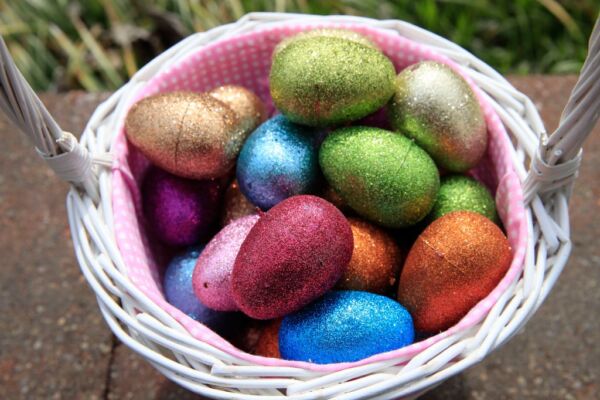On April 20th, this year marks the annual Easter Sunday. Traditionally, people enjoy chocolate in the shape of eggs or rabbits on this holiday. So, how does the taste of Easter chocolate differ from regular chocolate? Is it tastier? Let’s see what the experts have to say.
Nutrition senior lecturer Margaret Murray from Swinburne University of Technology in Australia and senior lecturer in food and nutrition Andrew Costanzo from Deakin University wrote on The Conversation website that the ingredients of Easter chocolate are not significantly different from regular chocolate, with the main difference coming from how people experience it.
The scholars compared the ingredients and nutrition of Easter chocolate and regular chocolate made by the same companies and found no major differences. For example, Cadbury’s milk chocolate hollow Easter egg and regular milk chocolate blocks both contain approximately 2,200 kilojoules of energy, 7 grams of protein, 31 grams of fat, and 55 grams of sugar per 100 grams.
If the ingredients of these two products are similar, why do they taste different? The scholars explained that it depends on factors such as texture and aroma.
They pointed out that taste is the identification of simple components of food dissolved in saliva. For chocolate, we perceive its taste as sweetness (sugar), bitterness (compounds like caffeine), and fat content (cocoa butter). However, it is the texture and aroma that most likely differentiate the experience of Easter chocolate from regular chocolate.
The mouth is extremely sensitive to food texture. We perceive various physical properties of food, known as “mouthfeel.” Smoothness, creaminess, and the sensation of oiliness in the mouth are important components of the chocolate’s mouthfeel.
People typically expect Easter chocolate eggs to have more creaminess than regular chocolate before tasting. This expectation can influence how the chocolate’s taste is experienced. If the chocolate eggs do not contain as much creaminess as expected, people may feel disappointed.
Moreover, the temperature at which chocolate is produced and stored can affect its texture. Due to the sometimes time-sensitive demand for Easter chocolate, manufacturers may use rapid cooling techniques during production, resulting in a texture different from traditionally produced regular chocolate.
Aroma also influences how we perceive the taste of food. When chocolate starts to melt in our mouths, its aroma is released. These aromas pass through the back of the nose, allowing us to smell various chocolate scents such as fruity, earthy, creamy, or floral notes.
The scholars mentioned that Easter chocolate in the shape of eggs or animals has a larger surface area in the mouth, meaning it melts faster than block chocolate. This affects the speed at which the chocolate releases its aroma.
Easter chocolate in the shape of eggs or animals may also require more time to chew and swallow. This prolongs their presence in the mouth, releasing more aromas. Compared to small chocolate pieces, when eating Easter chocolate, one may experience stronger or more diversified flavors.
The way people consume chocolate can also change its taste. A study categorized chocolate eaters as “melters” or “chewers.”
“Chewers” tend to swallow chocolate more quickly. Due to the shorter time for aroma release, they may perceive the chocolate’s taste as weaker.
Therefore, how a person consumes Easter chocolate may also affect whether they prefer this type of chocolate.
The scholars mentioned the last factor, which is consumption frequency. They noted that seeking and eating Easter eggs is usually part of a family ritual that occurs only once a year. This makes Easter chocolate seem special, creating a fond experience for people.
In conclusion, whether you are a “melter” or a “chewer,” Easter is a good time to slow down and celebrate with loved ones. Regardless of the shape of Easter chocolate, whether egg-shaped or another form, please enjoy it in moderation and savor the flavors.

